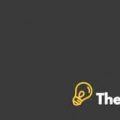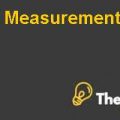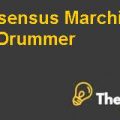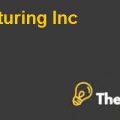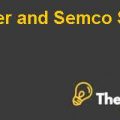
This case is about how the Coopers Brewery, a very small family business family of fourth-generation fought defined takeover offer international brewer. Although the takeover bid was officially launched in 2005, it began in 1983, so that the case shows how and why organizations to interfere with each other and how it can play in unexpected ways in the future. Although the case in detail about the absorption, it is intended primarily for use as a business case analysis of strategies for use at the beginning of the strategic course management. It also contains an adequate analysis of competitors spend an elementary analysis of the industry. This can be used separately for mergers and acquisitions analysis, but it is considered as a reference. "Hide
Introduction and Background:
In 2005-2006 the annual general meeting was announced by the Glen Cooper, chairman of Coopers Brewery and the fifth generation of the cooper’s family. He said in the meeting that:
In the history of the Cooper’s Brewery, the last year was the turning point for the company because of the increased volume of sales. During this period, the firm faced the problem; when the two giant companies of brewery industry in Australia were trying to take over the Cooper Brewery. As a result, the company incurred the cost of advisor fees to fight this take over situation. They successfully competed with this take over, maintained its independence and emerged into a much stronger organization.
In 2006 sales increased in the domestic market by 14 percent and outside the South Australia by 35 percent. The growth sales recorded regarding US imported beer was 96 percent.
In this case the information given is about company’s strategy, which it adopted to compete with the takeover by the two big giant companies in the Australian market. The analysis was made on the industry and external and internal strengths of the company were evaluated in this analysis. Different models and approaches were used to benefit the analysis.
The following analyses are made:
Analysis:
The analyses made are as following:
Industry Analysis:
The industry had 294 breweries in Australia in 1890 but numbers of companies were out and in 1990 only 11 remained in the industry. For the industry analysis, the Porter’s Five Forces Model is used:
Porter’s Five Forces Model:
The porter five forces model has 5 components in it, which clearly defines the industry.
- 1. Threat of New Entrants: (low)
In the industry small players were very few because of the higher start-up cost. The second reason was that; industry’s major companies were acquiring local small firms and these entry barriers for new firms to enter into the market.
- 2. Threats of Substitute Products: (high)
The market had different substitute products against the wine. The switching cost was very low and substitute products that were available in the market were in two categories:
- Performance Characteristics: Wine, Coffee, and Drugs
- Refreshment Characteristics: Carbonated soft drinks and Fruit Juices
The substitute products were easily available in the market at lower cost, against the Cooper’s product price.
- 3. Bargaining Power of Supplier: (Low)
There were numerous potential suppliers with limited powers which make the availability of raw ingredient convenient.
- 4. Buyers Bargaining Power: (High)
The buyers were the retail supermarkets, liquor chain stores, hotels and restaurants. These buyers bought products from the Cooper in Bulk Quantity; hence buyers were able to negotiate product prices.
- 5. Industry Rivalry: (high)
In the industry there were only two giant companies in the market, due to this the market share was distributed between them.
From the analysis of the Porter’s Five Forces Model; it can be concluded that:
The industry was profitable but the availability of substitute products could be a potential threat, if they wanted to switch into the production of wine.
Competitor Analysis:
The competitor’s analysis performed by using Competitors Profile Matrix. The weight and the score criteria are as below:
| Rating | Decision |
| 1 | Worst |
| 2 | Below average |
| 3 | Average |
| 4 | Good |
| 5 | Excellent |
Weight ages are given on the basis of the specific specialized features of the company and these features are used as Critical Success Factor.
| Competitors Profile Matrix | |||||||
| Critical Success Factors | Weight | Cooper | Foster | Lion Nathan | |||
| Rate | Weighted Average Score | Rate | Weighted Average Score | Rate | Weighted Average Score | ||
| Superior Marketing Capabilities | 0.1 | 3 | 0.3 | 4 | 0.4 | 3 | 0.3 |
| Economies of scale | 0.1 | 3 | 0.3 | 4 | 0.4 | 4 | 0.4 |
| Customers Loyalty | 0.2 | 2 | 0.4 | 4 | 0.8 | 3 | 0.6 |
| Profit Margin | 0.1 | 3 | 0.3 | 5 | 0.5 | 4 | 0.4 |
| Employee Retention | 0.05 | 5 | 0.25 | 3 | 0.15 | 3 | 0.15 |
| Variety of distribution channels | 0.05 | 2 | 0.1 | 5 | 0.25 | 3 | 0.15 |
| Management Qualification | 0.1 | 5 | 0.5 | 2 | 0.2 | 2 | 0.2 |
| Employee Satisfaction | 0.15 | 5 | 0.75 | 3 | 0.45 | 2 | 0.3 |
| Production Capacity | 0.05 | 4 | 0.2 | 4 | 0.2 | 4 | 0.2 |
| Variety of Products | 0.1 | 4 | 0.4 | 5 | 0.5 | 5 | 0.5 |
| 1 | 3.5 | 3.85 | 3.2 | ||||
- The Cooper’s Superior marketing capabilities are average as compare to other two giants because they have limited customers. Those customers demanded hand-made beer and wine. Economies of scale of the Cooper Brewery are lower than the other two companies because of the lower market share because they have niche market. Customers are loyal to Cooper because of the niche market they cater. The only produce for those who wanted the local brand of beer and wine had low profit margin as they have lower market share in Australia. Employee retention score is high because of the friendly environment and the process of selection they have. The company had the flexible environment and they also provide numerous facilities to their employees. For instance, Cooper has a golf course in the production facility. In the market, they lacked in the distribution channel because of the owning of major retail stores and hotels by its competitors. They have the highest score for the management qualification as they hired educated employees and there more MBA’s employed than the other two firms. The production capacity is higher as compare to the market share they have and this gives them the advantage for future expansion. The working environment of the Cooper Brewery is more flexible then the Foster and Lion Nathan brewery companies. The variety of products scoring of the Cooper Brewery is lower but impressive as compare to the market share.
Internal Analysis:
Business Strategy:
Cooper Brewery claims that they are willing to grow, though they were not profitable in previous years. They are focused on the beer and their markets are South Australia................
This is just a sample partial case solution. Please place the order on the website to order your own originally done case solution.
The solution will also come with a separate excel file with calculations.
by Graham Hubbard Source: Richard Ivey School of Business Foundation 11 pages. Publication Date: 06 May 2008. Prod. #: 908M16-PDF-ENG



